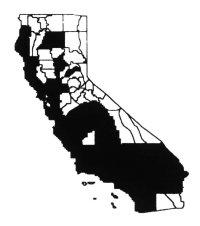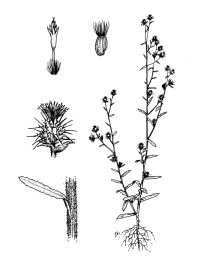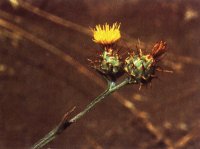| Centaurea melitensis | ||||
| Scientific name | Centaurea melitensis |
|||
|
Additional name information: |
L. |
|||
|
Common name |
tocolote, Maltese star thistle, Napa star thistle, Malta starthistle |
|||
|
Synonymous scientific names |
none known |
|||
|
Closely related California natives |
0 |
|||
|
Closely related California non-natives: |
11 |
|||
|
Listed |
CalEPPC List B,CDFA nl |
|||
|
By: |
John D. Gerlach Jr.,Joseph M. DiTomaso |
|||
|
Distribution |
|
|||
|
HOW DO I RECOGNIZE IT? |
In California, tocolote (Centaurea |
|||
|
Description: |
|
|||
|
WHERE WOULD I FIND IT? |
Tocolote is widely distributed in California, |
|||
|
WHERE DID IT COME FROM AND HOW IS IT SPREAD? |
Tocolote was brought to California during the |
|||
|
WHAT PROBLEMS DOES IT CAUSE? |
Dense infestations of tocolote displace |
|||
|
HOW DOES IT GROW AND REPRODUCE? |
Centaurea solstitialis on left; C. melitensis on right |
|||
|
HOW CAN I GET RID OF IT? |
Little work has focused on the control of |
|||
|
Biological control: |
Insects and fungi: No specific biological |
|||




